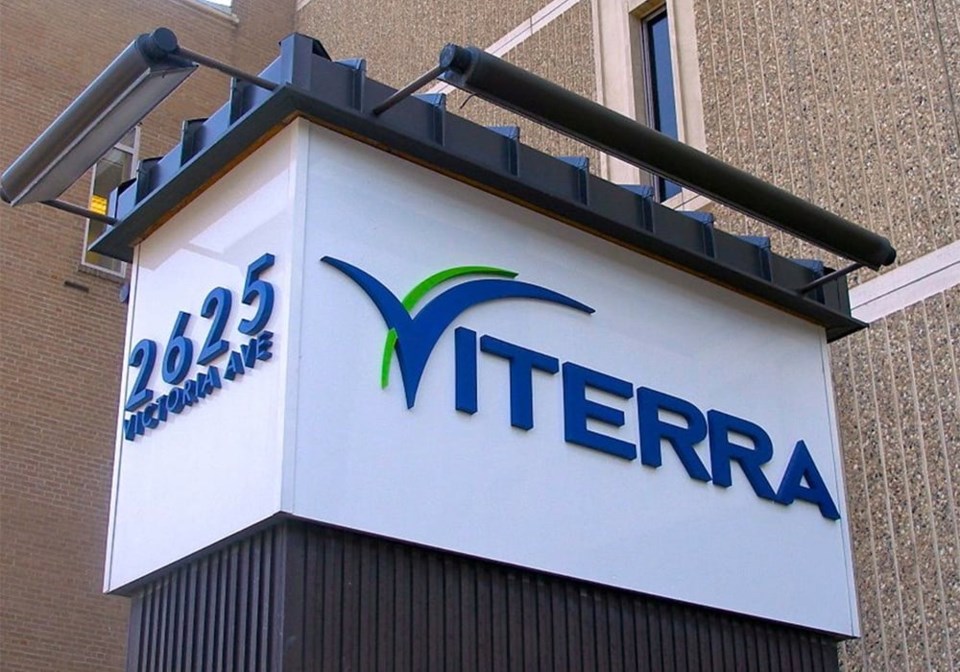MOOSE JAW — Viterra plans to spend $18 million to upgrade its century-old Moose Jaw facility.
Construction is scheduled to begin mid-April on a 12,500-foot double-loop track to offer continuous loading on the 160,000-tonne terminal on the city’s west side.
City council unanimously approved Viterra’s discretionary use application at a March 27 meeting.
Kevin Hallborg, director of special projects, said the work should be complete by late August or early September and commissioned in time for harvest shipping.
He said although the terminal is old, it has been well-maintained and remains a critical asset.
“What’s so nice about the Moose Jaw facility is the operating capacity compared to the new builds. It’s three, four times the capacity of what you would build anywhere else,” he said in an interview.
Expanding the track there, where land was available, made sense. Hallborg said using Canadian Pacific Railway’s high-capacity rail cars adds to the efficiency of the site.
“Shipping 40 percent more grain in a trainload out of a facility like Moose Jaw… you can’t match that efficiency. You just can’t,” he said.
Viterra worked with the city for some time on how the construction and loading could be accommodated. Britannia Road will temporarily close any time cars are being loaded and gates will be installed to prevent local traffic from entering. The closures will be 24 to 36 hours and happen 25 to 40 times each year.
A traffic impact assessment said only about 30 vehicles would be impacted when the gates are closed.
A hydro-technical analysis was also completed becauase the development was in the Thunder Creek floodplain.
“The results of the flood modelling show that the proposed loop track has negligible influence on the water levels in the floodplain,” said Viterra in a presentation to council.
Hallborg said enhancing efficiencies on the Prairies helps the supply chain. Farmers are growing more grain thanks to advances in genetics and technology.
“It’s the only way this industry can advance,” he said, just as the 100-car spots did, and the 50-car and 25-car spots before them.
The Moose Jaw terminal was opened in 1914 by the Canadian government. An annex was added in 1931 and it was sold in 1982.
Saskatchewan Wheat Pool, now Viterra, bought it in 1989 when it bought out Elders Grain. It was also known as AgPro Grain at one time.
The facility employs 37 people and pays about $320,000 each year in taxes.

